On the night of August 17 2016 a small group of students, parents and teachers gathered in the playground to view space up close. Mr Gerard Lazarus set up his powerful telescope and expertly directed it so that we could view the planets Venus, Mercury, Jupiter and four of its moons, Saturn with rings clearly visible and Mars. Next we went deeper into space to see a massive cluster of tens of thousands of stars, Omega Centauri. Lastly we were almost blown away when we viewed a full moon which looked so close and was so bright. One mum described it as a shimmering crystal and many students were amazed by the clear definition of craters and mountains, especially on the outer edge of the moon. The night was still, clear and not at all cold which made the experience even more pleasant. A big thank you to Mr and Mrs Lazarus for allowing us to use their telescope and for sharing their knowledge. Thanks also to Drew who encouraged me to organise this school incursion. The pictures below were firstly taken with available light to show a little of what is was like on the night, then some using flash to clearly show the amateur astronomers.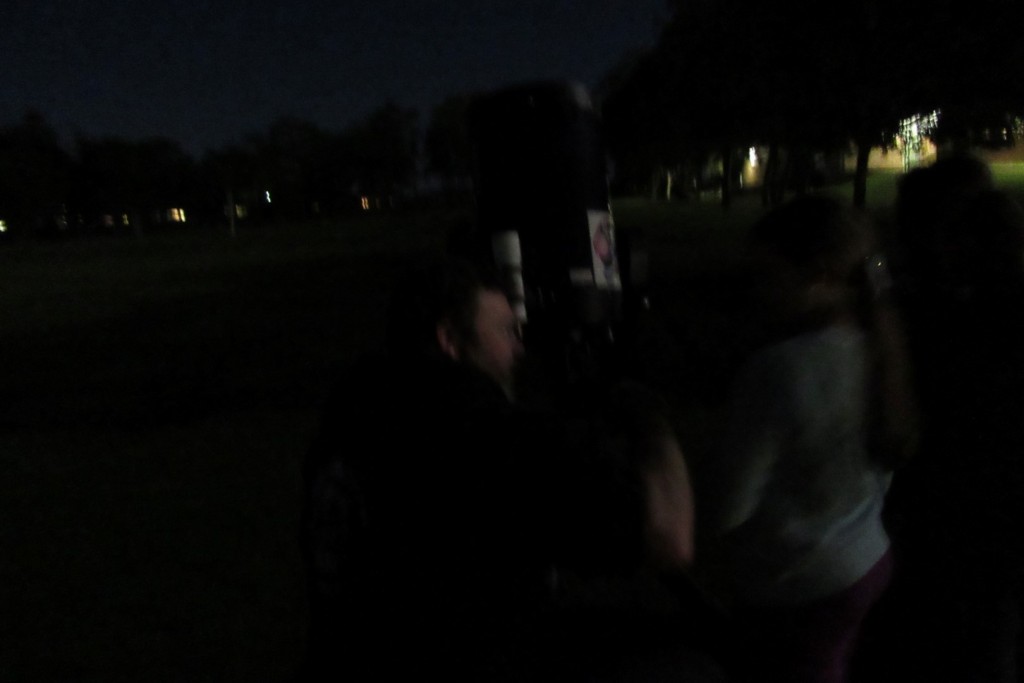
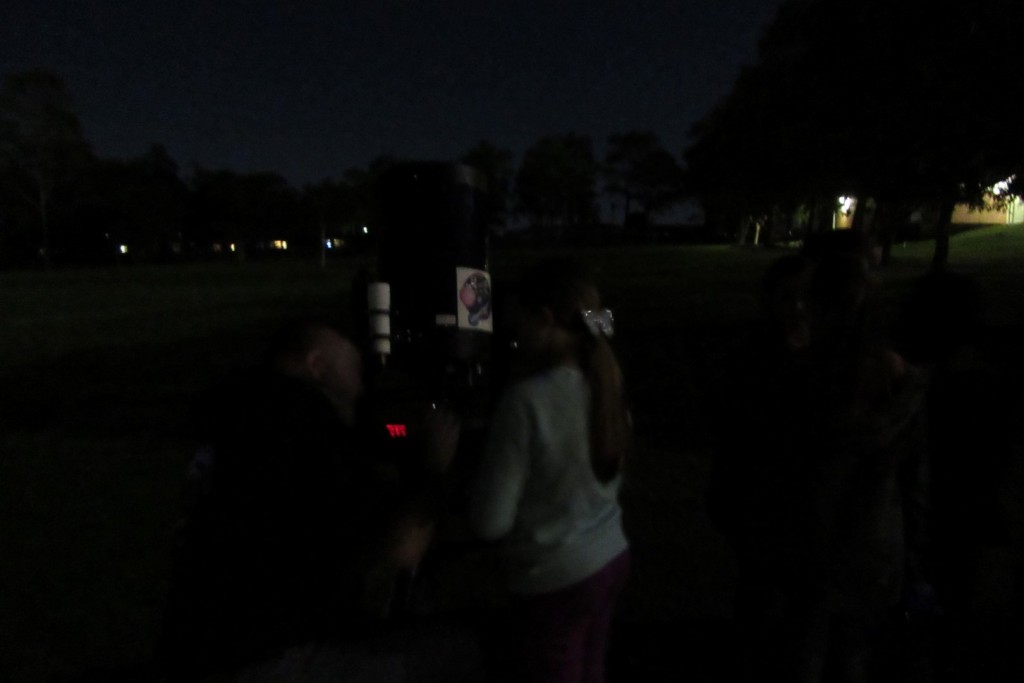

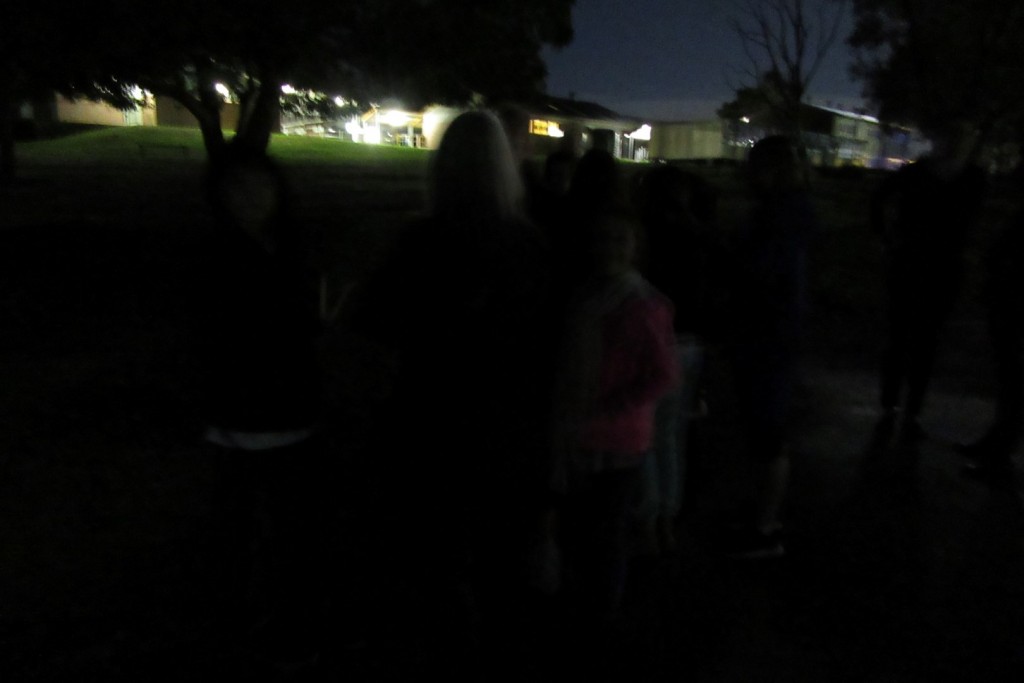
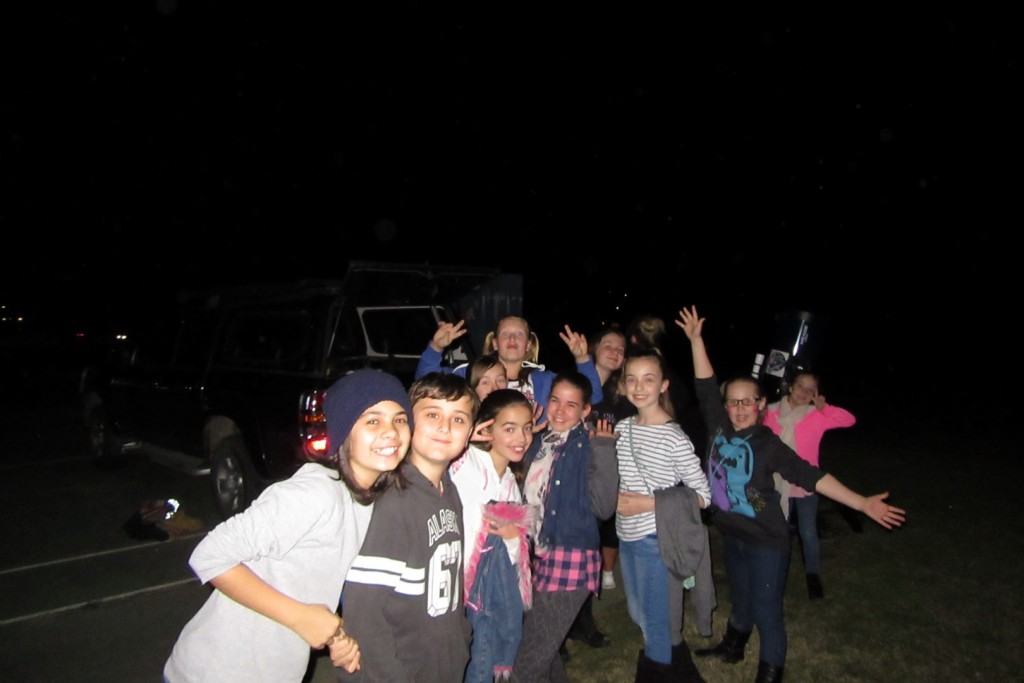
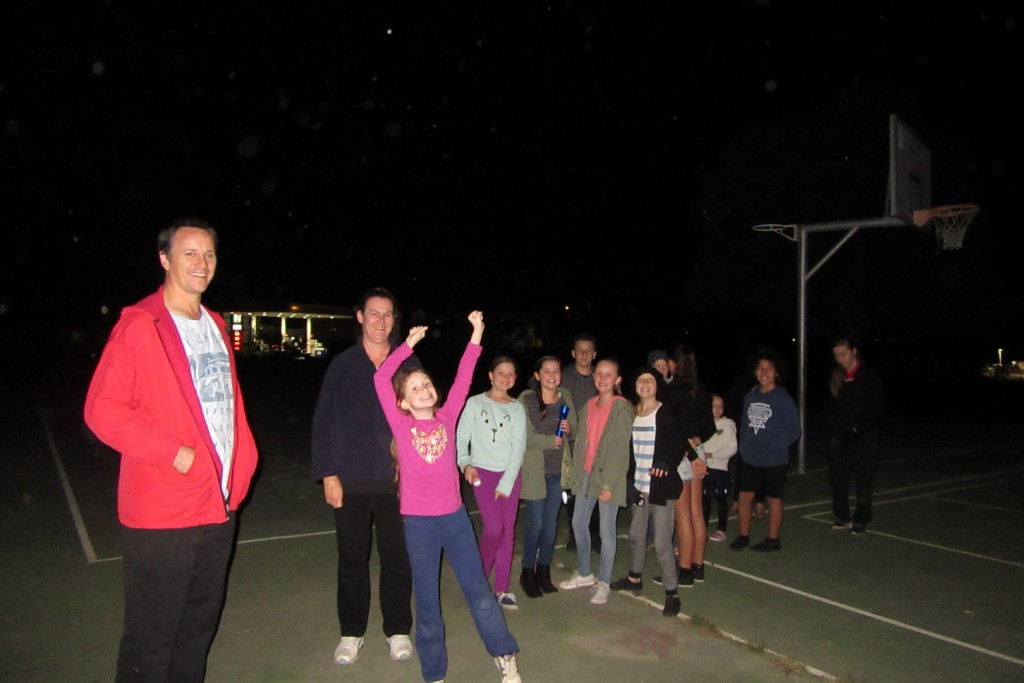
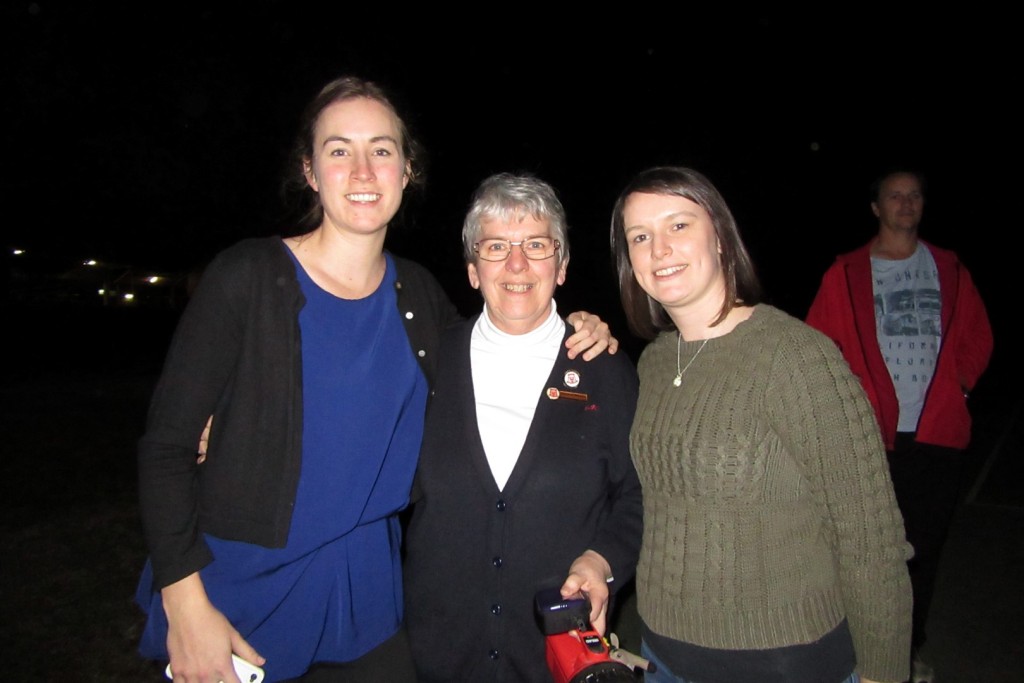
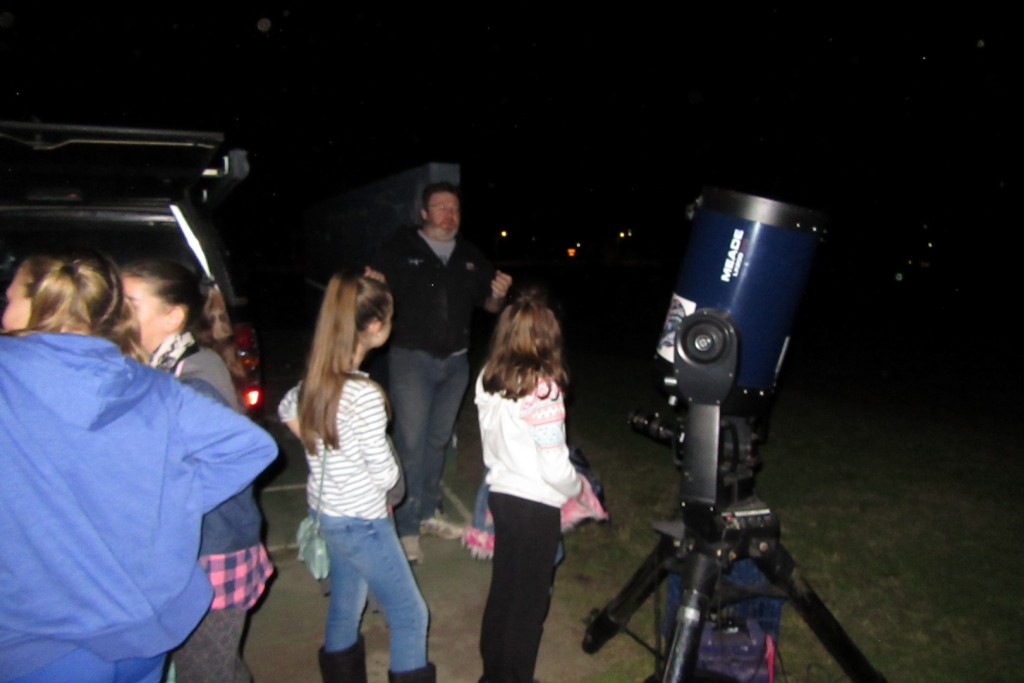
Tag Archives: Space
Asteroids: Close Encounters
Earlier this year (February 15, 2013) people in Russia had a very close encounter with fragments of an asteroid that caused a meteorite shower around 9am. List what damage was done. What was the bang and why did it cause so much damage? How many people were reported injured in this TV broadcast? Click on Russian Asteroid to view.
Asteroids have been studied by scientists for many different reasons. Some believe that by studying asteroids scientists could discover what Earth was like before it became molten and the minerals were changed. Others believe that we have water on Earth because asteroids collided with the planet, bringing water molecules with them. A BBC documentary Asteroids-the good, the bad and the ugly takes a look at some of these theories.
How can we view the night sky from the Slooh telescopes in the Canary Islands or Chile? Check out the day/night time clock here. Check out some of the other tabs across the top, including the Sun and Moon eclipses.
Stu’s Quiz Boxes for Stage 3
After researching facts about the Solar System and the history of space exploration Stage 3 classes have been devising questions and answers to make a quiz using the template from Stu's Quiz Boxes. Who will be the champion team in each class? In case we are not in the library for some classes perhaps this link will help us have a quiz about space.
Stage 3 Space Unit 2014
Following readings from To the moon and back - Bryan Sullivan with Jackie French, view this youtube clip showing how humans get the moon.
CASSINI SPACE PROBE PHOTOGRAPHS SATURN AND ITS MOONS
In July 2013 the space probe Cassini was sending back some amazing photos of the northern hemisphere of Saturn, now visible after the darkness of the long Saturnian night. Check out the hexagonal area surrounding wild storms. See the latest information, photographs and videos here at the Cassini Solstice project from NASA. Cassini also took a photograph of what earth looks like 900 million miles (1.5billion km) away. At the time, 19 July 2013, people were asked to give Saturn a wave and upload photographs of their waves. Here is a montage of these creating an amazing image of Earth.
While you are visiting the Cassini Solstice site explore the moons which orbit Saturn and hover over Titan to discover some amazing facts and pictures of the moon's surface.
There are many specialist words (technical vocabulary) related to astronomy. Research the meanings of these words:
perturbation, magnitude, arc seconds, culminate, azimuth, annular, eclipse. Discuss with your group which source will be best to find the most accurate meanings: dictionaries, astronomy books, the internet or a combination of these?
Remember that not all you read online is accurate. How do you verify whether something is true? View this powerpoint MARS I received in an email this week. What do you think?
Now read this information about when Mars will be visible above Newcastle in May 2016 - now what do you think?
READ ACROSS THE UNIVERSE STAGE 3
2013's Book Week theme was READ ACROSS THE UNIVERSE.
Using the Learn what's up site explore the 88 constellations shown :
The easiest way to navigate this site is to select Beginner Charts tab from the side menu and pick a month to view its star chart - maybe your birthday month. Check out the names of constellations you think might be most suitable and write them on your spare paper. Next go down to Constellations tab on the side menu and view your chosen constellations by name and draw the one which best fits the criteria above and the letter I should put it on.
If you want to find out more about the history of some of the constellations follow this breadcrumb trail: Side menu>For kids> Constellations. What is your zodiac sign? What is its story? Which constellation is the least like its name?
You may have noticed that all these constellations are from the perspective of the Northern Hemisphere . Next week we will explore more about Southern Hemisphere constellations and have some fun making some. You will need a torch for that activity.
Activity 2:
Go to Museum Victoria 2D activity site to find the constellation maps for the summer and winter, as well as some other activities which you might like to do.
What is above us in the sky - see real-time positions of satellites here.
